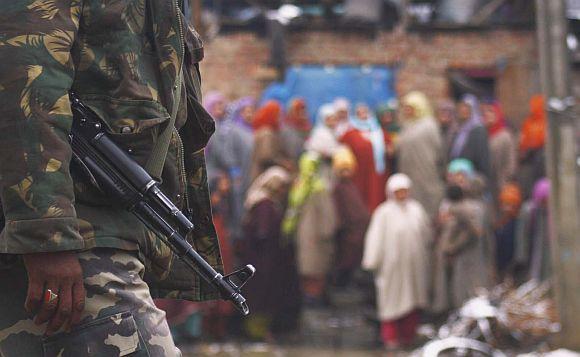
Growth, Finance Minister P Chidambaram pointed out while delivering the K Subrahmanyam Memorial Lecture in New Delhi, is the key for greater public welfare and greater security.
Sustained high growth, Chidambaram felt, is the key to become a comprehensive national power.
Until recently, India has had a very compartmentalised view of national security. Each threat to national security was neatly fitted into one compartment.
The first, of course, was a war with Pakistan. That was fitted into a compartment and was meant to be deterred, or defended, through the might of our armed forces.
A war with China was, and remains, unthinkable and therefore that threat was fitted into another compartment and reserved to be dealt with through a mixture of engagement, diplomacy, trade, and positioning adequate forces along the borders.
Beyond Pakistan and China, we did not perceive any external threat to our security. Other threats such as communal conflicts, terrorism, Naxalism or Maoist violence, drug peddling and fake Indian currency notes were bundled together under the label 'Threats to internal security' and were left to the ministry of home affairs.
Some threats were not acknowledged at all as threats to national security and these included energy security, food security and pandemics.
Prime Minister Manmohan Singh, in his address to the Combined Commanders Conference on October 20, 2005, identified -- as threats to national security -- terrorism, proliferation of weapons of mass destruction, low intensity conflicts, and threats to the security of sea-lanes.
The National Security Adviser, Shivshankar Menon, delivering the Raja Ramanna Lecture on January 21, 2013, said, 'We now need to consider our energy security, food security, technology security, and social cohesion and institutions, to name just a few, when we think of national security.'
He also argued that there was little distinction between internal security and external security and identified the internal security challenges as having 'some roots outside India and (is) linked to what happens outside the country.'
A close examination of the threats to national security will reveal that each one of them is connected to one or more other threats.
For example, the threat of terrorism is connected to the threat of proliferation of arms including weapons of mass destruction.
The threat to the security of our sea-lanes is connected to the threat to energy security. Low intensity conflicts have a direct bearing on social cohesion.
Technology security will be the key to building new institutions. Natural disasters, especially those caused by climate change, can wreck food security. Pandemics and diseases, if uncontrolled, can diminish our capacity to defend the borders against our adversaries or to defeat the militants within the country.
National security is, therefore, caught in a complex spider's web and unless we recognise that each strand of this web is connected to other strands, we would not be able to do justice to our fundamental obligation to protect and defend the security of the nation.
Please ...
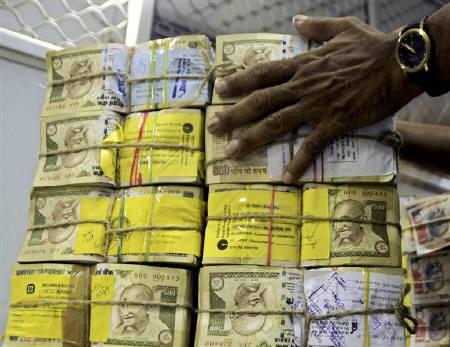
Defending and promoting national security stands on three important pillars: Firstly, human resources; secondly, science and technology; and thirdly, money.
I have placed money last, not because it is the least important, but because it is the most important pillar of national security.
Without money, we cannot nurture and build our human resources. We need schools, colleges, universities, libraries, laboratories, skill development institutions and, above all, highly qualified teachers.
It was in the sixth decade of Independence that we were able to pass a law on the Right to Education. Only now we have been able to achieve near-universal enrolment of children in school, but there are still problems in retention and, according to 2010-2011 statistics, only 73 percent of children who enroll in Class I complete five years of schooling and only 59.4 percent complete eight years of schooling.
Despite having 32,987 colleges and 621 universities, the Gross Enrolment Ratio is only 18.8 percent. The shortage of teachers at the elementary school level is estimated at 800,000.
According to the ministry of human resource development we need 20,000 more colleges and 1,500 more universities if we aim to provide post-school education to all the children who complete school.
Even today we turn out only about 800,000 engineers from our engineering colleges and 44,000 MBBS doctors from our medical colleges every year.
Only 72,202 scholars were enrolled in PhD programmes in 2012, and only 9,704 applications were filed for patents in calendar 2012 by Indians.
The Central government spends only 0.67 percent of GDP on education (2010-2011), and that includes all heads of expenditure that could be broadly brought under the subject 'education'. It is estimated that all the state governments put together spend another 2.36 percent of GDP on education (2010-2011).
The percentages may appear modest, but the absolute amounts are quite large. Nevertheless, the average child enrolled in Class V has only attained the competence of a child in Class II.
At the other end, none of our universities figure in the top 200 universities of the world.
Infant mortality rate is still at 44 per 1,000 live births, maternal mortality rate is at 212 per 100,000 live births and, on both counts, we will not achieve the millennium development goal.
Life expectancy has increased from 59.4 years in 1991 to 66.1 years in 2011, but during the same period the child sex ratio has declined from 945 girls to 914 girls per 1,000 boys.
The expenditure of the central government on 'health care' is 0.31 percent of GDP and state governments spend another 0.60 percent of GDP.
Thus, on education and health, the total government expenditure is below 4 percent of GDP. Other emerging economies spend much more. For example, Brazil (9.1 percent), South Africa (9.6 percent) and China (5.9 percent) spend much more.
If we can create the fiscal space that will allow us to spend an additional one percent every year amounting to an additional four percent over the remaining four years of the 12th Plan, it would make a huge impact on human resource development in the country.
Please ...
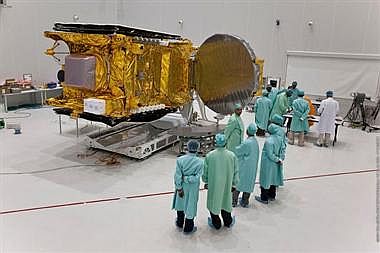
Every country that has moved up to the level of middle income country or a developed country has intensively promoted and heavily relied upon science and technology.
It begins with the Gross Enrolment Ratio. Countries that have made the big leap in the last 30 years have an impressive GER.
In Malaysia it is 40; in Brazil it is 26 percent and in China it is 26 percent. China has about 1,200 colleges devoted to engineering which produce about 700,000 engineering graduates every year.
None of the threats to national security can be effectively countered unless we embrace science and technology and impart instruction in science and technology beginning at the school level.
There are four physical domains in our world -- land, sea, air and space. We have a land border of a length of about 15,000 km with Pakistan, Nepal, Bhutan, China, Bangladesh and Myanmar, and even a small length of 106 km with Afghanistan.
We patrol these borders using a variety of measures -- from sophisticated radars to camel-mounted border guards.
On the Indian-Bhutan border, there are only two land custom stations at Jaigaon and Hatisar. However, a large volume of goods do not move through these stations and do not bear the endorsement of the Customs authorities.
There are densely populated villages on either side of the India-Nepal and the India-Bhutan borders. Because only border guarding forces are in place, and hardly any technology is employed, it is widely acknowledged that the borders are porous.
There are 191 battalions of the BSF, ITBP, SSB and Assam Rifles on our borders, but little technology.
We also have a long coastline extending to 7,516 km. It is only after the Mumbai terror attacks that we took steps to strengthen coastal security. We created a coastal command, authorised and funded a number of coastal police stations, funded the purchase of boats for coastal policing, and installed some radars.
However, given the thousands of boats -- small and big -- that are in the waters off the West Coast, the threats to security still remain quite high.
On the waters off the East Coast, there is virtually no force other than the Navy.
We have many defence and defence research installations on the East Coast, the DRDO and the Department of Space use the East Coast extensively, and there is a large programme for exploration of oil and gas in the Bay of Bengal.
Except for the presence of naval and coast guard vessels, and some technology that they have brought in, we have not used technology in a big way to bolster our security along the coast line.
In the air, we rely on the Air Force. This is perhaps the most technology-driven arm of the defence forces. In space, we have a few satellites, mainly dedicated to communications, weather forecasting and other peaceful purposes. Some satellites are capable of surveillance, but we abide by the international regime that there should be no militarisation of space.
Apart from land, sea, air and space, there is another domain which is cyber space. Much of our critical infrastructure lies in cyber space.
Cyber crimes such as hacking, financial fraud, data theft, espionage etc would, in certain circumstances, amount to terrorist acts.
Further, the threat of disruption of financial, rail, air, power, critical information services through cyber attacks could also be construed as terrorist attacks.
I need hardly emphasise that the latest advances in technology would be required to build our capacity to meet the threats in cyber space and, only recently, we made a modest beginning to build capacity to counter threats in cyber space.
It is a matter of regret that we are not ploughing in more funds and more human resources into R&D, especially R&D that is related to national security.
The situation will not change unless we allow more players, who will bring more resources, into security-related manufacturing and services sectors.
Our indigenous advance light helicopter, light combat helicopter, light utility helicopter, intermediate jet trainer and basic trainer aircraft are still at the stage of design and development.
Arjun, the main battle tank, after many years of development, was inducted into the Army in 2004, and the next model is still some years away.
The largest conventional-powered naval vessel built in Garden Reach Shipyard is the Aditya, weighing 17,000 DWT and a cruising speed of 20 knots.
An aircraft carrier is under construction at the Cochin Shipyard.
Capital expenditure in 2012-2013 on indigenous defence production, including expenditure on R&D and in the DGOF and DGQA, was Rs 5,060 crore (Rs 50.60 billion).
If we wish to scale up both on technology and on numbers, we need far more resources than what we can afford today.
Please ...
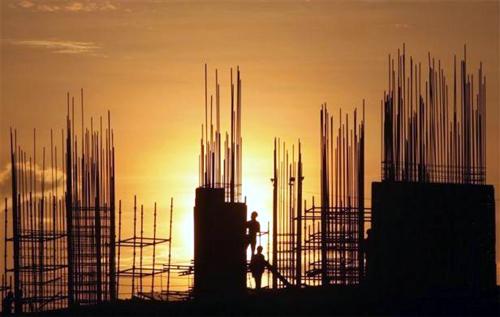
The last of the three pillars is money. It is also the pillar that will support the first two pillars.
Money comes out of growth. The revenues of government are tax revenue and non-tax revenue.
Non-tax revenue constitutes a small proportion of total revenue and is more uncertain.
Tax revenue consists, mainly, of five taxes: Excise, customs, service tax, income tax and corporation tax.
Excise revenue is a function of growth in the manufacturing sect#8744 customs revenue is a function of higher imports; service taxes are a function of more activity and more transactions in the services sect#8744 income tax and corporation tax are a function of more incomes for individuals, families and corporations.
Increase in tax revenue is, in a very large measure, the outcome of higher growth.
When the economy is on a roll, tax revenues are buoyant and when the economy slows down, the first casualty is revenue from taxes.
The short term response is to borrow more, leading to a ballooning of the fiscal deficit. The medium term response will be to contain expenditure, but that has its own consequences.
A cutback on public expenditure will further slow down the economy. It will also curtail the number of jobs that are created.
A cutback on social welfare will hurt the poor: Less money for education or health care will deny, to many more people, access to basic education or basic health facilities.
And, finally, a cutback on expenditure on defence or on the police forces will severely compromise our defence and security preparedness and diminish our capacity to meet the challenges to national security.
It is therefore a self-evident truth that growth is the key for greater public welfare and greater security. Yet, we adopt a disdainful attitude to growth. Some think that the value of growth is overstated and that we would be better off if we pursued not the goal of growth but other goals such as cultural nationalism or debt-driven egalitarianism.
There can be no better example of two countries on different growth paths, one a good two percentage points higher than the other, than of China and India.
China has been able to grow at an average rate of 9 percent and above since 1981. India, on the other hand, achieved a growth rate of 9 percent or higher in only four years: 2005-2006, 2006-2007, 2007-2008 and, finally, in 2010-2011. Even while swearing by 'socialism with Chinese characteristics,' China recognised the advantages of a higher growth rate.
High growth in China inevitably translated into higher expenditure on security and, as a logical corollary, a high degree of security.
In a speech, the outgoing president of China Hu Jintao, said, 'Military preparedness has been enhanced. The armed forces have greatly enhanced their capability of carrying out their historic mission in this new stage in the new century, and they have accomplished a host of urgent, difficult, dangerous and arduous tasks.'
The results of higher expenditure show up in the hardware.
According to the Stockholm International Peace Research Institute (SIPRI), China has nearly 62 ICBMs. China is reportedly developing the JL-2 SLBM for its new strategic submarines, four of which are already sailing while two more are under construction.
India has purchased one from Russia that is used for training purposes. There are reports that China has commissioned its first indigenously renovated aircraft carrier, unveiled its fifth generation stealth aircraft (the J-20 and the J-31) and tested an anti-satellite weapon once and a missile interceptor twice.
There is also a report that China has developed a strategic heavy lift transport aircraft.
China has a space lab in orbit and it also plans to launch 100 satellites during its on-going five year plan from 2011-2015. Twenty space craft will be launched this year including its third Lunar probe and a manned space craft that will dock with China's space lab.
There are indications that, by 2020, China may have more than 200 space craft in orbit accounting for about one-fifth of the world's total.
These examples are sufficient to emphasise the point that sustained high growth is the key to become, if a country aims to become, a 'comprehensive national power.'
Please ...
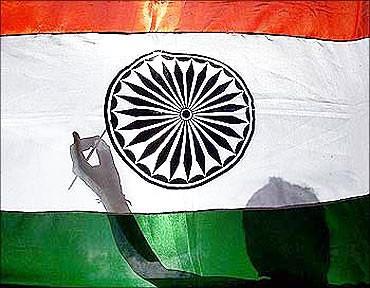
Another dimension of national security is social cohesion and harmony.
In fact, the case for high growth will be much stronger if one took into account the dimension of inclusive development that contributes to social cohesion and harmony.
I conclude by asserting that there is no substitute for sustained growth over a long period of time if India should attain the status of, at least, a middle income country.
It is only sustained growth that gives as a chance to tune the growth model in favour of inclusive development.
Without growth there will be neither development nor inclusiveness.
As a nation, we seem to oscillate between embracing growth as the highest goal and deriding growth as no panacea for the ills that afflict the country.
If we do not have sustained high growth over a long period of time, we will be, forever, an undernourished, undereducated, underprovided and underperforming nation.
We will also fall behind in scientific and technological advancements and the gap between India and the developed world, and the gap between India and other emerging countries including China, will continue to grow.
We will also be constrained in our ability to defend national security against both external and internal threats.
Today, we have a choice.
We have a choice between becoming the third largest economy of the world and a middle income country or becoming one of the largest economies of the world that muddles along with the bulk of its people trapped in a life of low income, poor quality, high morbidity and great inequality.
Needless to say, the two models of India will have very different consequences for national security.
The first model will make India a secure nation, capable of defending itself, and a force of peace in the neighbourhood and elsewhere.
The second model will leave the country exposed to every kind of threat to which will be added internal conflicts, and India will be viewed as a strife-torn country that is a threat to the peace and progress of the world and, in particular, Asia.
A nation that was the cradle of civilisation five thousand years ago must choose wisely and, once the choice is made, it must have the resolve and the power to stay the course.
Recent history has many examples of nations that have, with single-minded determination, devoted themselves to the pursuit of prosperity and security.
The early winners were Japan and Korea. More recently, Brazil, Mexico and Indonesia have demonstrated their potential to join the ranks of such countries.
China, if it achieves its goals, will be the country to emulate.
Whither India?
Will India embrace the twin goals of prosperity and security and outshine all of them?
I leave you with that question and urge each one of you to find the answer.
...
...